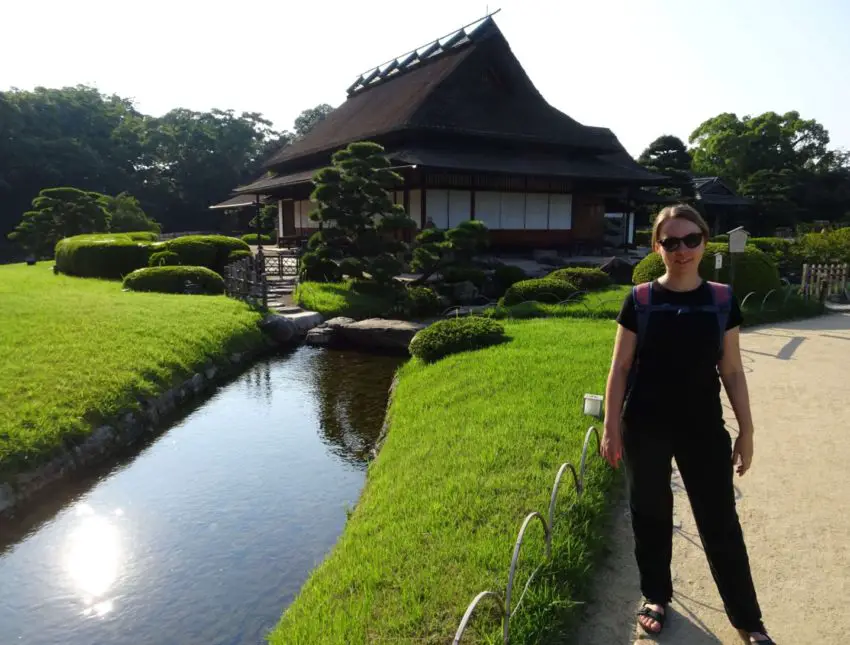Okayama Province in southern Honshu is commonly referred to as the “Land of Sunshine“, because of its usually pleasant weather. Its capital city, which goes by the same name, is a cool destination that doesn’t seem to see too many foreign visitors.
The reason can’t be for a lack of sights, because in my opinion, Oyakama’s utterly beautiful Kōraku-en Garden and unusual black castle alone warrant a visit.
Apart from that, the city is surrounded by the pretty Kibi plain, which can be explored on a slow bicycle tour, giving you a chance to explore an attractive part of rural Honshu. Read on for my recommendations of what to do in Okayama.
This post may contain affiliate links, and I might earn a small commission at no additional cost to you. For more info, click here.
What to see and do in Okayama
Kōraku-en Garden
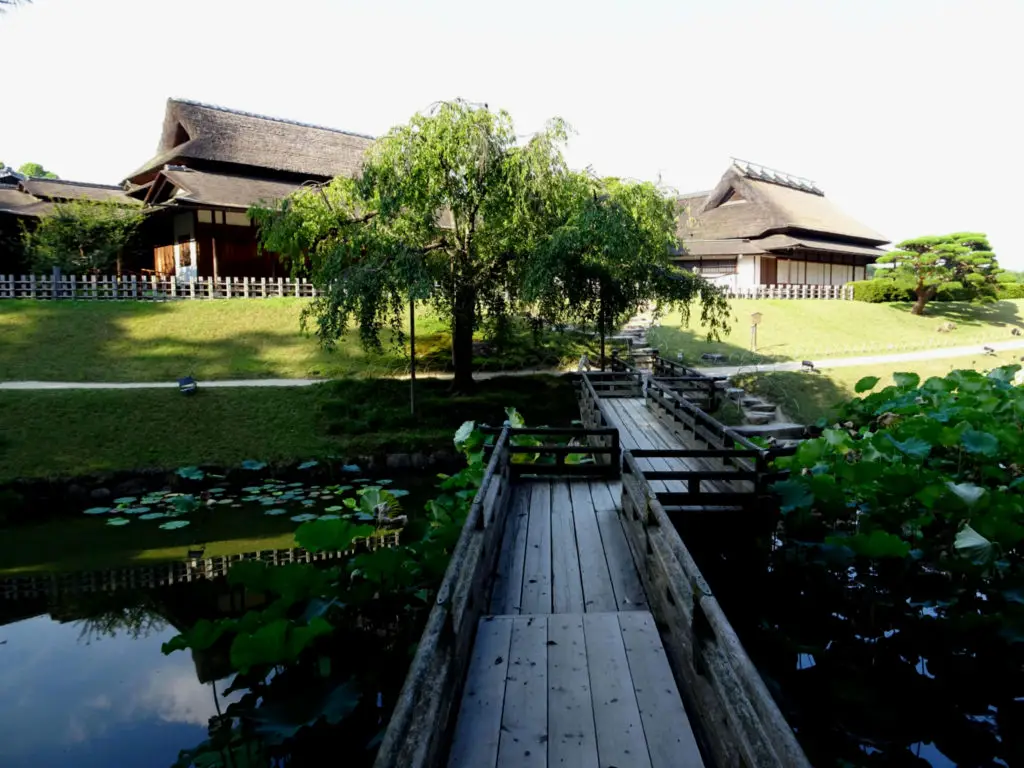
Constructed in 1700 under the orders of then-lord lord of Okayama Ikeda Tsunamasa, Kōraku-en Garden completely deserves its reputation as one of the most beautiful parks in Japan.
As a matter of fact, it has been designated as one of “Three Great Gardens of Japan” according to the Japanese people (the others being Kenroku-en in Kanazawa and Kairaku-en in Mito). This is quite a pedigree considering the amount of gorgeous parks and gardens in the country.
Kōraku-en used to be the sole domain of the daimyō and his guests until it was opened to the public in 1884. Nowadays, visitors can roam freely around the beautifully landscaped park and enjoy the little details at every corner.
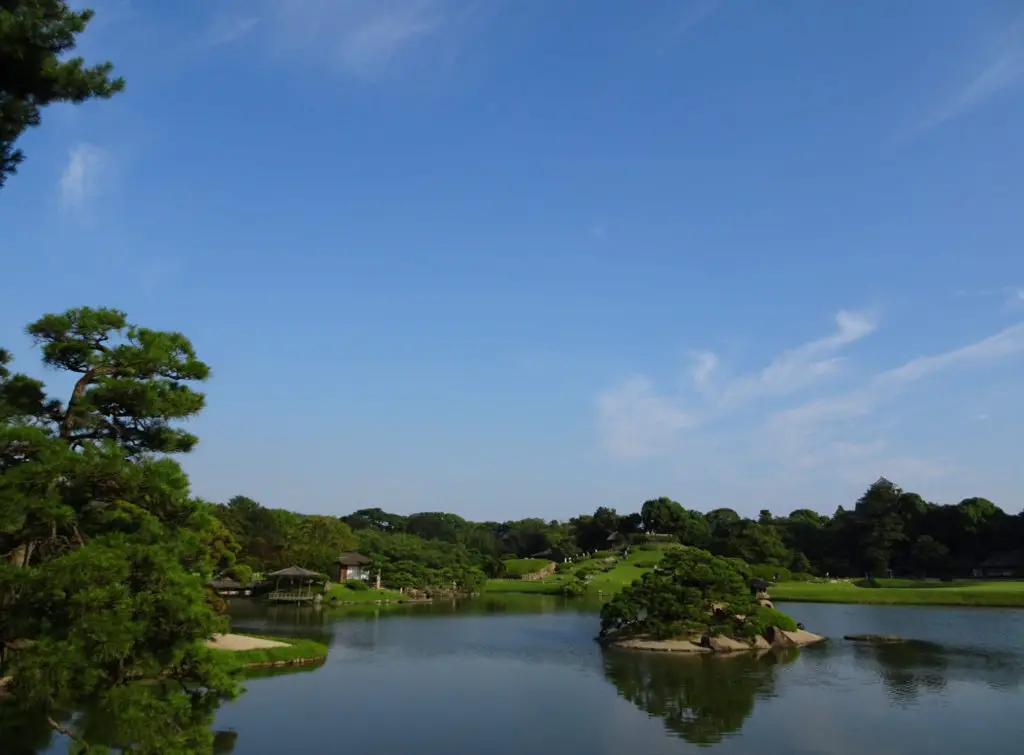
Stefanie and I have to agree that Kōraku-en’s beauty is exceptional, and next to Ritsurin Koen in Takamatsu, it was one of our favourite historical gardens in Japan.
The views all around the complex are fantastic, especially as the black-walled castle always looms in the background, which makes for some great photo motives. There are several ponds and cute little streams, all of them harbouring tons of Koi Carps and Turtles.
Apart from that, you can check out some beautiful reed-decked buildings from the Edo era, which are strewn all over the garden, including some small shrines and reception buildings for the lords of Okayama and their guests.
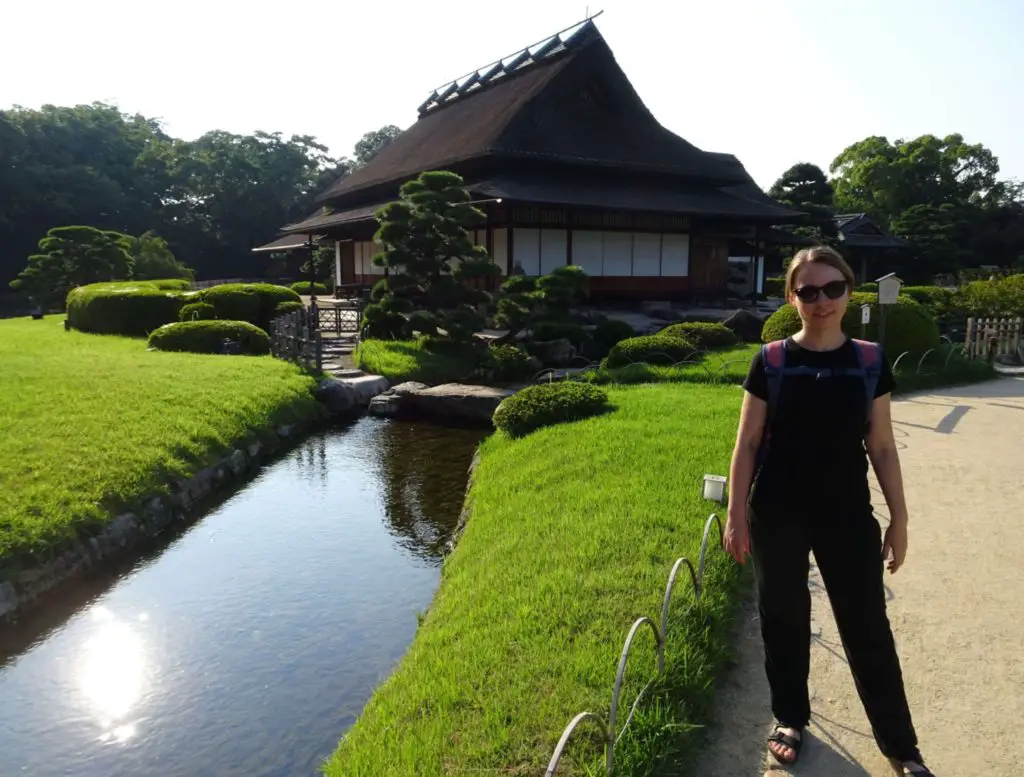
There’s also an iris garden, a tea plantation and even a rice field, which was populated by herons when we were there. There’s a lot to see and if you don’t want to rush, I suggest you plan at least an hour here, two if you want to really soak up the atmosphere.
We paid an entrance fee of 400¥ for the garden. The opening times vary by season, but you can check them here. The garden sits on a small island in the Asahi River directly north of the castle, from where you can reach it by a pedestrian bridge. You can also take the bus going in the direction of Fujiwara Danchi from the train station and get off at Korakuen-Mae Bus Stop.
Okayama-jō Castle
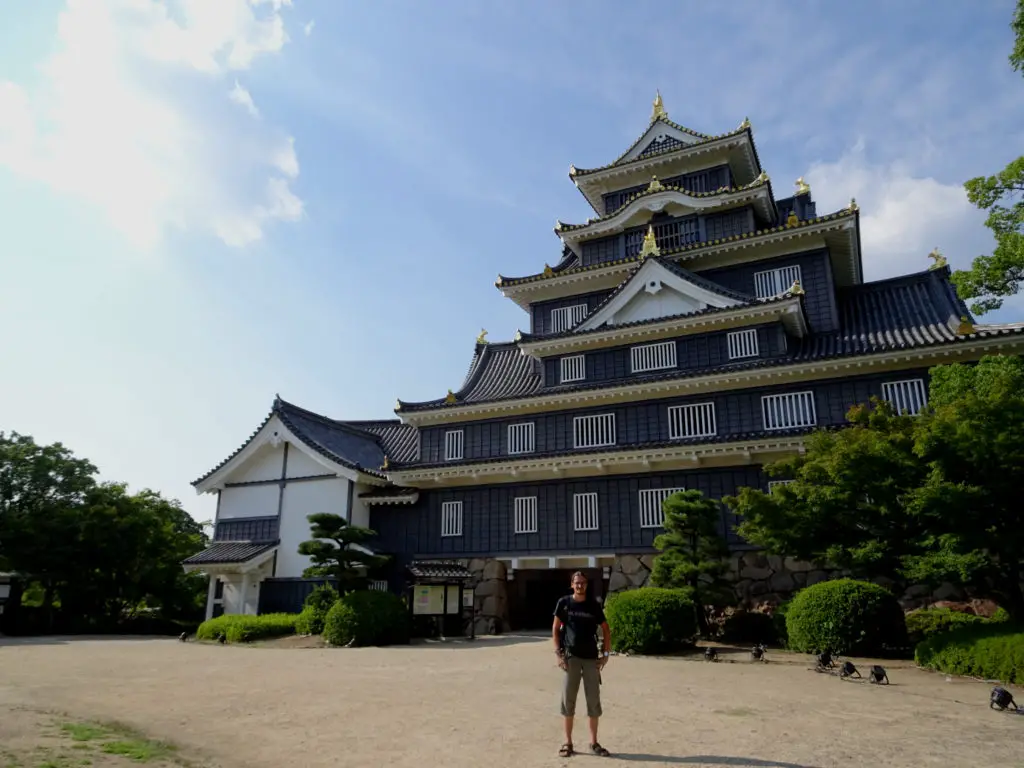
Okayama’s impressive castle is also referred to as “Crow Castle” due to its unusual black façade. While it was originally constructed at the end of the 16th century, the current building only dates to 1966, as the former structure was destroyed in World War II.
Because of that, the views from the top of the keep and the historical weapons and objects of daily use exhibited inside the castle are more interesting than its mostly modern interior construction.
We enjoyed our visit, but if you’re on a tight schedule and only have time for one or two castles, I suggest checking out nearby Himeji Castle, which still appears as it did centuries ago. That said, Okayama-jō is still very impressive from the outside, especially when picturesquely framed by the trees of nearby Kōraku-en Garden.
The visiting times are 9AM to 5:30PM (Check them here) and the entrance fee is 320¥. The castle is located east of the city centre on the western bank of the Asahi River and South of Kōraku-en Garden. To get there by public transport, you could take the tram to Shiroshita Stop and walk five minutes east from there.
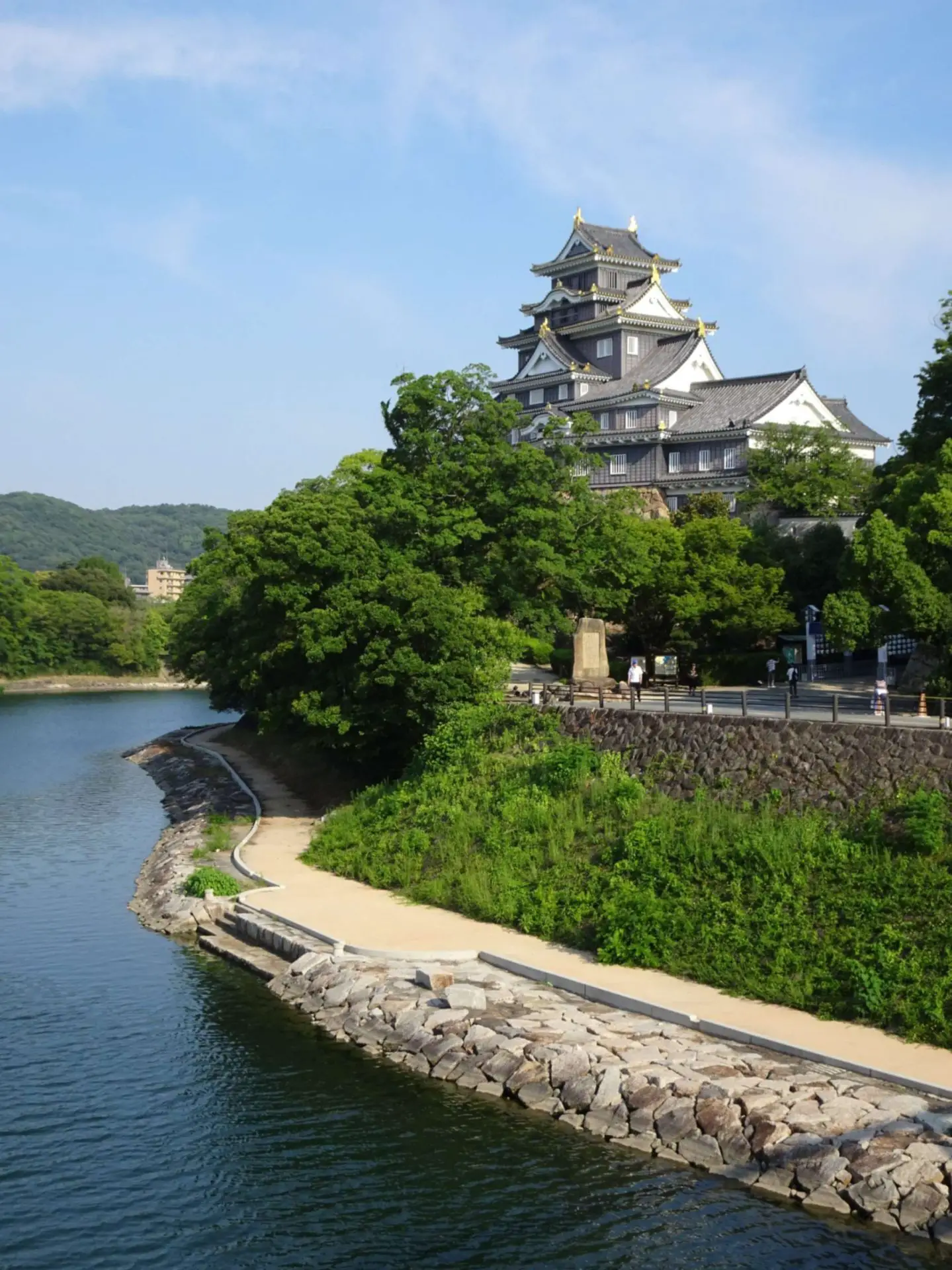

Hayashibara Museum of Art
This small museum in a former guest house building features countless beautiful artefacts collected by local businessman Ichiro Hayashibara. The exhibition displays the former possessions of the Ikeda family, the Feudal Lords of Bizen Province (which is nowadays the location of Okayama) and includes some fascinating swords, armours, masks, calligraphies and lacquer work, among other pieces.
It’s not necesarily stuff you can’t see in any bigger museum in the country, but we still found it interesting, and you can easily combine it with Okayama Castle and Kōraku-en Garden.
It’s open from 10AM to 5PM (Check the times here and the entrance fee is 500¥. It’s located west of the south-western corner of the castle moat.
Bike Tour through the Kibi Plain
The peaceful Kibi plain right outside of Okayama city is a fantastic place for bicycle tours, due to its largely flat terrain. On the way, you can visit several cool low-key sights. Check out my dedicated guide to the bike tour.
Guided tours of Okayama
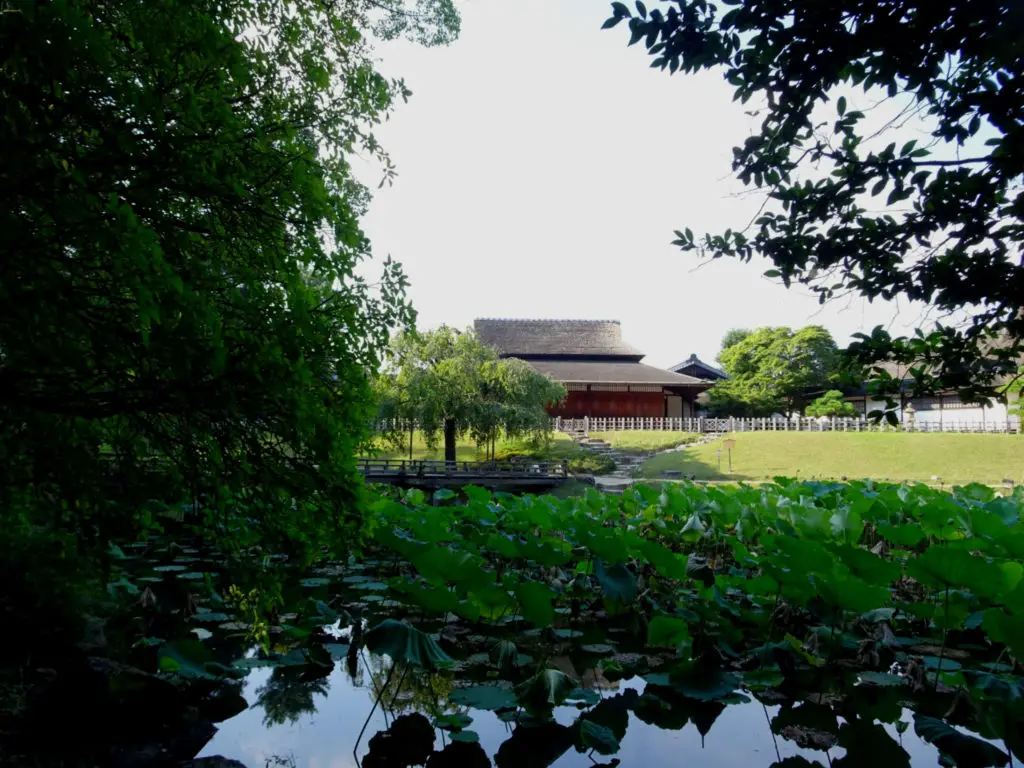
If you prefer the company of a guide, you should check out this customizable Four Hour Tour of the most important places in city. If you enjoy something more out-of-the-ordinary, you could also take a unique Standing Bicycle Tour to all of the city’s top sights.
Map of Okayama
Browse this map for all the sights mentioned above as well as some places to stay in Okayama.
Practicalities
How to get to Okayama
Okayama is located on the JR San-yō Line and trains passing between Hiroshima (approx. 40 mins./3,000¥) and Kyoto (approx. 60 mins./3,700¥) stop in the city. On the way to the latter, trains also stop in Himeji (approx. 20 mins./1,500¥) and Shin-Osaka Station in Osaka (approx. 50 mins/3,000¥) along the way.
Where to stay in Okayama
We stayed in the dormitory at the budget Kamp Houkan-cho Backpacker’s Inn & Lounge. It’s located in a quiet residential area slightly west of the train station, so you’ll have to leg it for a bit to get to the centre but it has a cool vibe, friendly staff and pleasant common hangout/bar area on the ground floor. There are plenty of mid-range options in the city centre. Check the map above to find one that suits you.
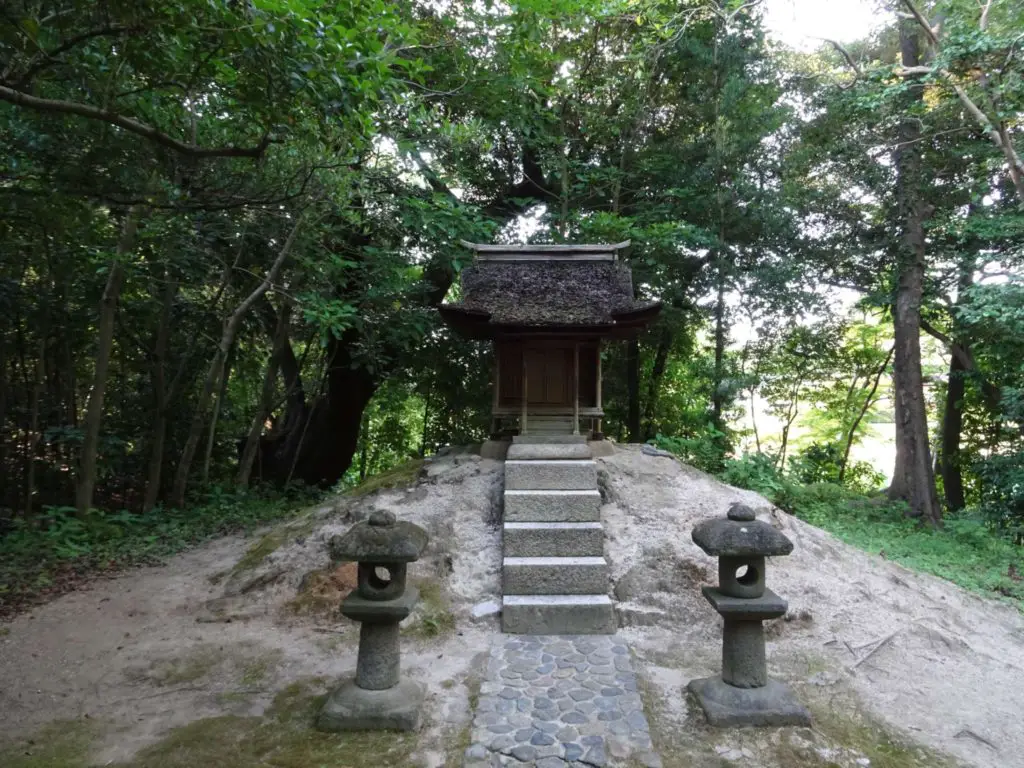
Where to eat in Okayama
The city is famous for its local Demikatsudon dish, which consists of a breaded pork cutlet served atop rice and covered in tasty demiglace sauce. We tried it at Ajitsukasa Nomura, which is one of the most popular places serving the specialty.
Also make sure to try the city’s other speciality Kibi-Dango, a sweet millet dumpling. It’s connected to the legend of local folktale-hero Momotarō, who allegedly went on adventures with a motley crew consisting of a dog, a monkey and a pheasant. You can see a statue depicting the troupe in front of the train station.
Where to go next
Miyajima Island, home to the magnificent Itsukushima Shrine and its Floating Gateway
Naoshima, the quirky Art Island in the Sento Inland Sea
Himeji Castle, the biggest and most beautiful castle in Japan
